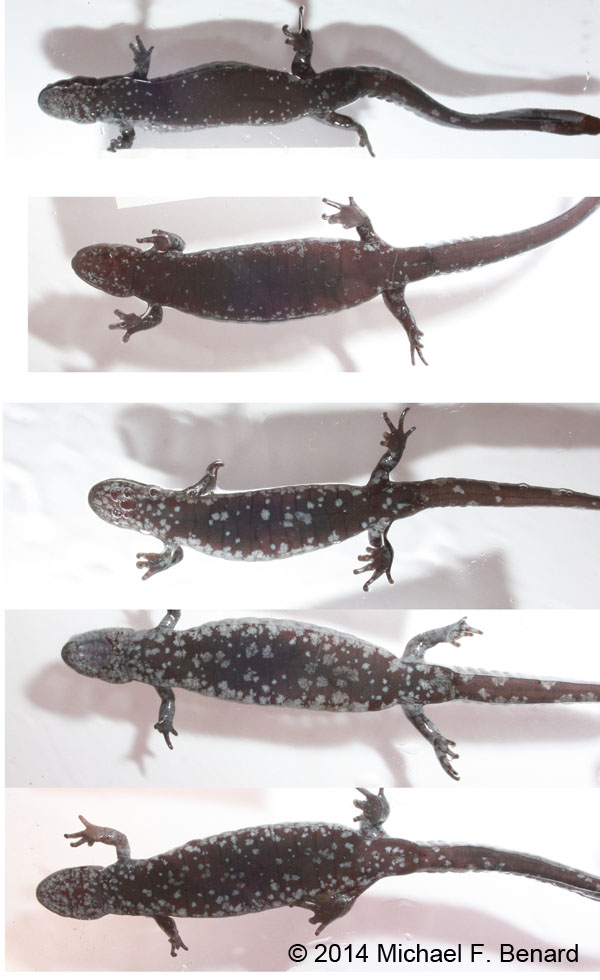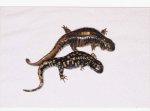mikebenard
New member
- Joined
- May 7, 2007
- Messages
- 49
- Reaction score
- 13
- Points
- 0
- Country
- United States
- Display Name
- Mike Benard
Hi Folks,
I would be curious to hear about your impressions of adult Ambystoma numbers at breeding sites this year, especially if you've been following populations for multiple years.
I have been estimating population size in a group of smallmouth + hybrid salamanders in Northeast Ohio since 2011. There was a noticeable drop in the number of adults in all of our ponds this year. I don't know if this was due to adult mortality or just individuals skipping breeding for a year, but we may be able to sort that out from recapture data in future years.
Population fluctuations are very common in amphibians and can be caused by all sorts of factors. But I've heard from a number of people across the midwest / northeast who have been closely tracking Ambystoma populations, and nearly all of them have reported drops in adult abundance this year.
Did you see any drops in numbers of breeding salamanders? Increases? No change? Please share your observations.
Thanks for sharing!
Mike
PS: we've started a pilot project to determine if we can use belly spot patterns to identify individuals from year to year. Below is a picture showing some salamander bellies - I've found the variation to be really fantastic! I may try to put together a little 'quiz' for people to try their skills on matching individuals caught at different times.

I would be curious to hear about your impressions of adult Ambystoma numbers at breeding sites this year, especially if you've been following populations for multiple years.
I have been estimating population size in a group of smallmouth + hybrid salamanders in Northeast Ohio since 2011. There was a noticeable drop in the number of adults in all of our ponds this year. I don't know if this was due to adult mortality or just individuals skipping breeding for a year, but we may be able to sort that out from recapture data in future years.
Population fluctuations are very common in amphibians and can be caused by all sorts of factors. But I've heard from a number of people across the midwest / northeast who have been closely tracking Ambystoma populations, and nearly all of them have reported drops in adult abundance this year.
Did you see any drops in numbers of breeding salamanders? Increases? No change? Please share your observations.
Thanks for sharing!
Mike
PS: we've started a pilot project to determine if we can use belly spot patterns to identify individuals from year to year. Below is a picture showing some salamander bellies - I've found the variation to be really fantastic! I may try to put together a little 'quiz' for people to try their skills on matching individuals caught at different times.




